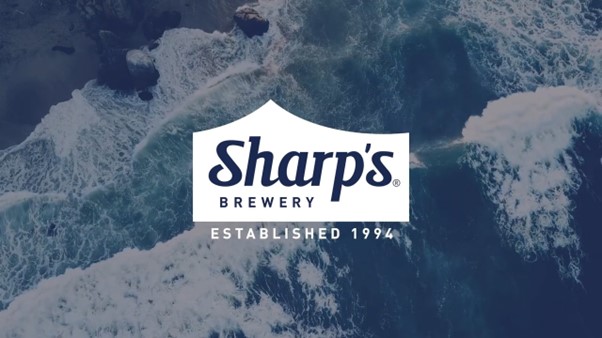From as early as the 19th century, sports sponsorships have been making their mark. From athletes starring on cigarette packets to Coca Cola sponsoring the Olympics Games since 1928, brands have discovered unique ways to connect with fans and build a name for themselves.
The global sports sponsorship industry was a powerhouse in 2022, clocking in at an estimated $66 billion. Experts predict that this market will continue to surge, reaching nearly £86.47 billion by 2030.
And with the rising influence of social media, particularly after the COVID-19 pandemic — which saw a 20% increase in worldwide social media usage — sports companies are fighting to stay in the race and compete with one another to create successful sports marketing campaigns for their fans.
If you would like to know how social media has — and is continuing — to revolutionise sports sponsorships activations and the ways in which its giving sport aficionados new ways to connect with their favourite brands and sports teams, then let us take you on a run-through of it all.
Increased reach and exposure
Global audiences
The main objective of every sponsor is to gain more visibility and exposure. The rise of social media enables sports leagues and brands to have direct and real-time access to fans worldwide. International fans can now connect with their favourite teams regardless of location.
Sport-related topics consistently trend on social media platforms like on Twitter, Instagram, Facebook across the globe. The appeal is undeniable: fans can easily stream content, connect with their favourite athletes or teams, and even other supporters in the comfort of their homes via digital platforms. This global reach is exemplified by this year’s Super Bowl 58, which secured 62.5 million viewers worldwide in addition to its domestic viewership of 123.4 million viewers in the US. Not only this, but this season finale marks a historic moment as the most-watched telecast in history, according to NBC News.
While there isn’t a playbook on how brands should market themselves, the use of social media definitely contributed to the Superbowl’s massive figures. The pre-game hype was undeniable! Dunkin’ Doughnuts’ comical TikTok’s featuring Ben Affleck, Tom Brady and Matt Damon teased fans weeks before the event, racking up an incredible 49.7 million views worldwide.
You can’t deny that social media has had a massive effect on the sports industry and its fans – and is accelerating every day. By transcending these geographical boundaries, this presents an opportunity for sports sponsors to leverage them and create a real-time connection with their audiences — fostering a sense of loyalty and community.
Targeted marketing
With millions of users online, it can be difficult to cater to everyone’s likes and dislikes. However, one way social media has become a game-changer for sports sponsorships is with targeted marketing. Social media platforms are treasure troves of user data, which reveal online behaviours, locations, demographics and interests.
Sponsors can leverage this by tailoring their campaigns to resonate with specific fan groups and reach the most relevant audience for their brands. A great example of this was the Your Trading Teammate campaign by ThinkMarkets, the Official Global Trading Partner of Liverpool Football Club (LFC) here at Pitch. Filmed during the COVID-19 pandemic, we worked with ThinkMarkets to create a short film that introduced LFC fans to the brand and could be shown on their social media channels. Featuring famous LFC players Milner, Matip and Phillips, we successfully created a film and humorous GIFs. We pushed these out across all their social media channels to target those who had an interest in trading and related activities. Check out some other examples of our work here at Pitch.
Enhanced fan engagement
Live streaming
For years, live sports thrived on TV, with networks bidding millions for broadcast rights. However, the digital landscape is evolving, challenging this traditional medium as younger audiences engage with sports content differently. Industry trends have revealed that four out of five sports fans regularly watch sporting events through streaming or online channels and less are watching it on television. X, the platform formerly known asTwitter, saw a whopping 3.7 billion tweets about sports worldwide in 2021, and continues to remain the leading platform for real-time interaction during and after matches.
Social media platforms have become a companion to live streams. Fans can discuss the game in real time, share reactions and memes, ultimately creating a more interactive and social viewing experience.
The flexibility of mobile devices empowers fans to enjoy sports on their own terms — whether they are relaxing in the bath, commuting on public transport, or soaking up the sun in Barbados.
Moreover, the interest for non-live content such as match highlights, video clips or behind-the-scenes, has surged. It’s nearly on par with the interest in live events themselves, with 39.4% of global fans watching non-live related content to 40.7% of fans who watch sports live. It can’t be just our feeds that are dominated with Christiano Ronaldo penalty kicks right? But hey, we’re not complaining!
Interactive content and real-time engagement
Before social media, fans had limited options for interacting with their favourite athletes: attending games or reading articles. Today, the digital revolution lets them connect directly or indirectly with stars via social media platforms and engage in competitions, polls or even Q&A’s.
With the ability to turn a single video into a viral sensation overnight, platforms like TikTok and Instagram emphasise the importance of creating interactive and engaging content that not only keeps fans intrigued but also showcases the brand’s values — increasing followers and building longer, more meaningful fan connections.
Sponsorship activations have become a team sport in many ways. Brands are actively collaborating with teams and companies to create memorable content and sports marketing campaigns, generating more returns than brands that do it alone.
One way this is often executed is by storytelling in content. People enjoy compelling narratives, and more so from celebrities or athletes, because they are personal, entertaining, unscripted and allow users to connect. Whether it is a behind-the-scenes glimpse into an athlete’s training routine or a video series chronicling the daily life of a professional athlete, content like this helps sponsors showcase their objectives, values and personality of both the brand and the athlete — forging a positive connection between the brand and consumer.
A great example of storytelling was when Olympic athletes, such as American Rugby player Cody Melphy, created “insider edition” videos of the Olympic Village in Tokyo during the games. Showcasing clips of their bedrooms, dining halls and even the autonomous cars around the village, this captivated the attention of 22.1 million viewers on TikTok and brought excitement and intrigue to fans.
Want to influence the digital sphere?
Hopefully this has given you some key insights into some of the ways social media platforms are influencing sports marketing and how brands are tapping into new dimensions.
At Pitch, passion is at the heart of everything we do. We are fuelled by fan passion which is why we enjoy facilitating marketing partnerships that will positively impact people’s lives. If you would like to know how we can evolve your brand, using social media and other data-driven insights, get in touch with us. Or if you would like to learn more about sports sponsorships and how they work, check out our blog.






